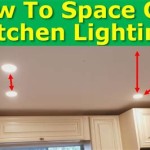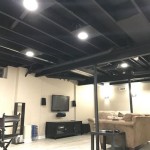Essential Aspects of Ceiling Light Fixture Housing
Ceiling light fixture housings play a crucial role in illuminating interior spaces while ensuring electrical safety. They are designed to accommodate light fixtures and provide a secure and stable base for mounting. Understanding the essential aspects of ceiling light fixture housing is vital for ensuring proper installation, performance, and longevity.
Housing Type
There are two main types of ceiling light fixture housings:
- Recessed housings: These housings are installed within the ceiling, creating a flush or semi-flush appearance. They are suitable for areas with limited ceiling height or when a more streamlined aesthetic is desired.
- Surface-mounted housings: These housings are mounted directly on the ceiling surface, providing a more decorative or accentuating effect. They are often used in traditional or vintage-style spaces.
Size and Shape
The size and shape of the housing should match the light fixture being used. Housings are typically available in various diameters and depths to accommodate different fixture sizes. It is essential to ensure that the housing can support the weight of the fixture and provide adequate clearance for wiring and insulation.
Material
Ceiling light fixture housings are typically made from metal or plastic.
- Metal housings are more durable and offer better heat dissipation, making them ideal for high-wattage fixtures. They are also less prone to warping or discoloration over time.
- Plastic housings are lighter and less expensive. However, they may not be as durable or heat-resistant as metal housings.
Trim
The trim of a ceiling light fixture housing frames the fixture and provides a decorative element. Trims can be made from various materials, including metal, plastic, or glass.
When selecting a trim, consider the style of the fixture and the overall décor of the space. The trim should complement the fixture and enhance the aesthetics of the room.
Electrical Features
Ceiling light fixture housings should meet electrical safety standards. They must provide a secure connection for electrical wiring and insulation to prevent electrical hazards. Housings should also be rated for the wattage of the fixture being used.
Some housings may include additional electrical features, such as:
- Dimming compatibility: Allows the fixture to be dimmed using a dimmer switch.
- Sloped ceiling adapter: Enables the housing to be installed on sloped or vaulted ceilings.
- Wet location rating: Suitable for use in damp or outdoor environments.
Installation
Proper installation of ceiling light fixture housings is essential for safety and performance. The installation process typically involves:
- Cutting a hole in the ceiling for the housing.
- Securing the housing to the ceiling using brackets or screws.
- Connecting the electrical wires to the housing.
- Installing the fixture into the housing.
It is recommended to consult a qualified electrician for professional installation to ensure electrical compliance and safety.

Led Ceiling Light

Mr16 Led Ceiling Light Modules Recessed Spotlight Fixture Gu10 Downlight Housing China Made In Com

2x2ft Louver Housing Recessed Led Lights And Fixtures Ph

3x2ft Louver Housing Surface Mount Led Lights And Fixtures Ph

Factory Cylinder Surface Mounted Led Spotlight Frame Housing Ceiling Light Gu10 Downlight China Down Made In Com

Types Of Lighting Fixtures

3x2ft Louver Housing Surface Mount Led Lights And Fixtures Ph

Buy Flush Fitting Ceiling Lights Housing Units Manchester

Wisbeam Semi Flush Mount Ceiling Light Fixture E26 Medium Base Metal Housing W

Mr16 Led Ceiling Light Modules Recessed Spotlight Fixture Gu10 Downlight Housing China Made In Com








